SpaceX Explosion Damages Environment Around Launch Site
6:33 minutes
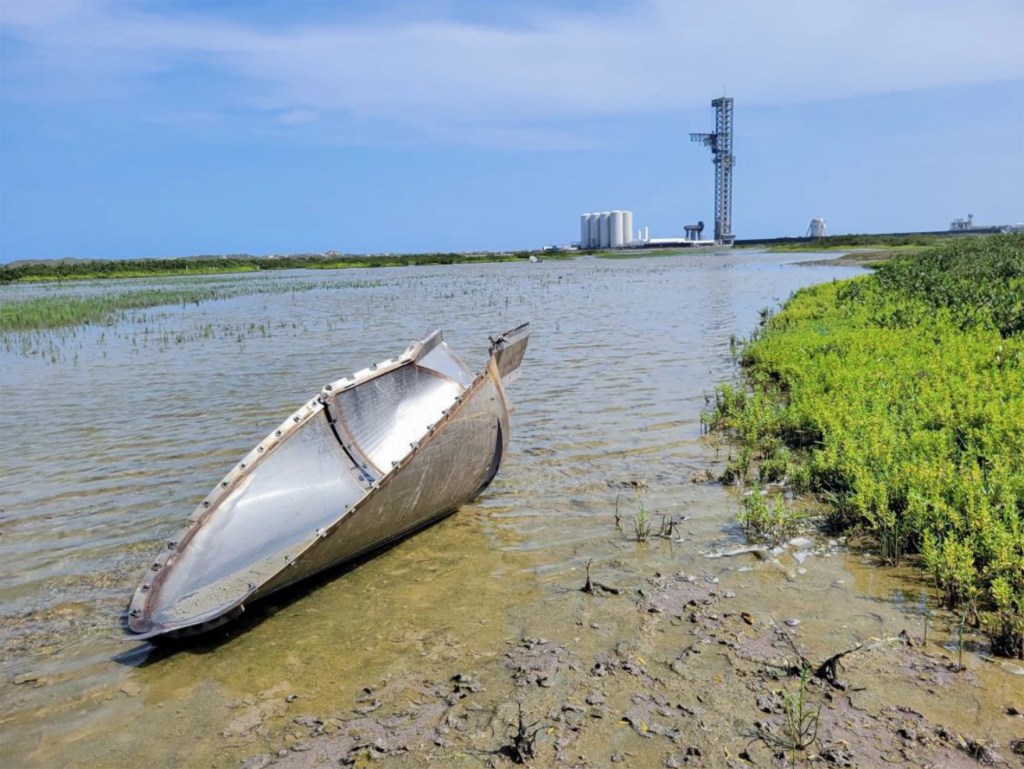
This article is part of The State of Science, a series featuring science stories from public radio stations across the United States. This story, by Gaige Davila, was originally published by TPR.
Last Thursday, SpaceX’s South Texas facility was awash in noise and fire, as crowds gathered in South Padre Island and Port Isabel to watch Starship’s first orbital launch.
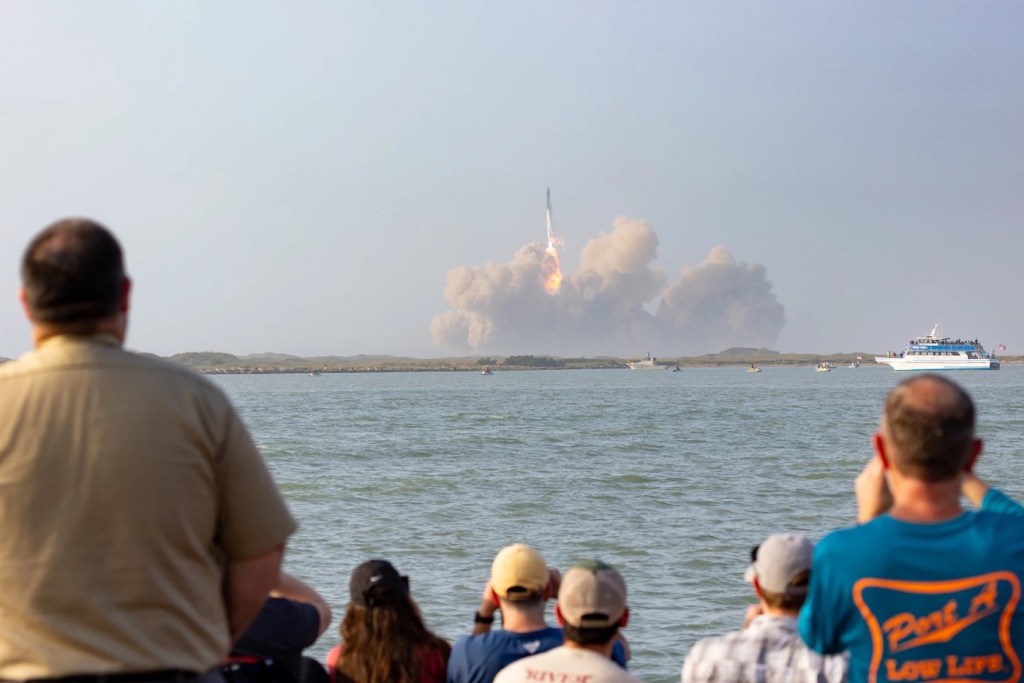
It was the largest and most powerful rocket ever made, standing at around 400 feet tall. Four minutes into the launch, SpaceX detonated the rocket after the SuperHeavy booster failed to separate from the Starship as planned.
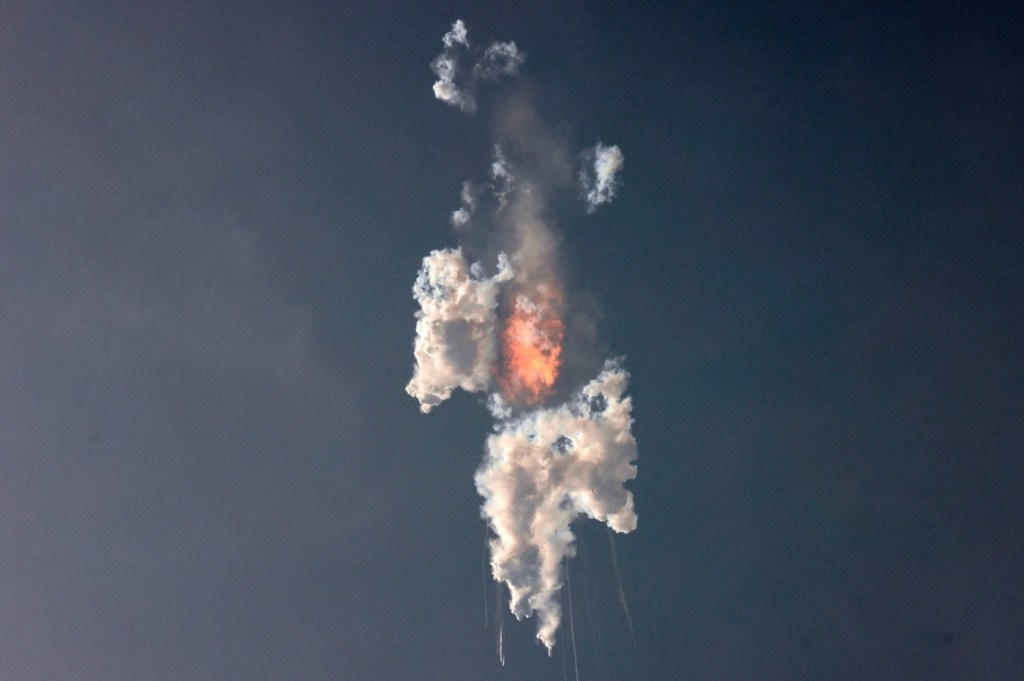
The launch destroyed the company’s launch pad, spreading concrete up to three quarters of a mile away. Cameras left by YouTubers were either knocked down or destroyed in the rumble, along with some of the fence surrounding the launch pad’s road-facing property.
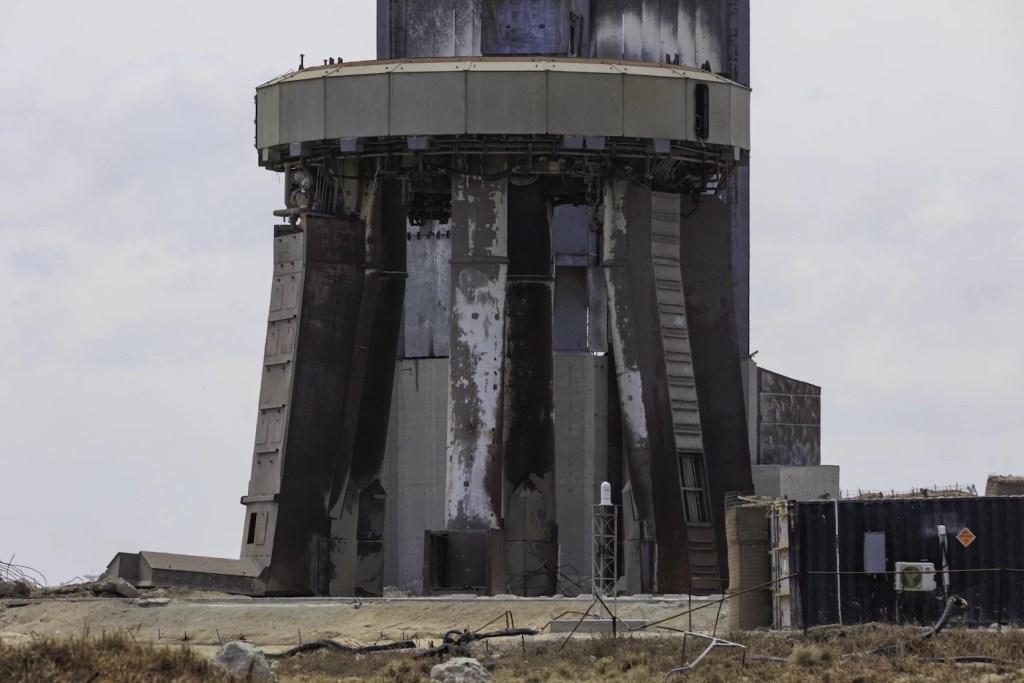
Particulate matter from a debris cloud of sand and soil created by the launch fell in Port Isabel, according to the Cameron County Emergency Management Division.
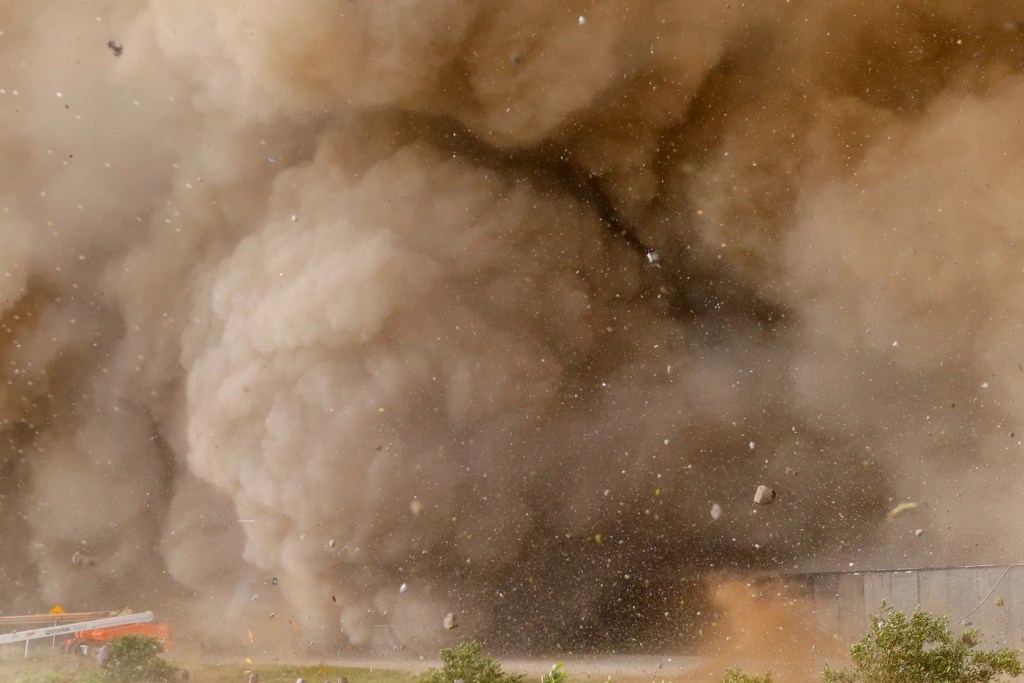
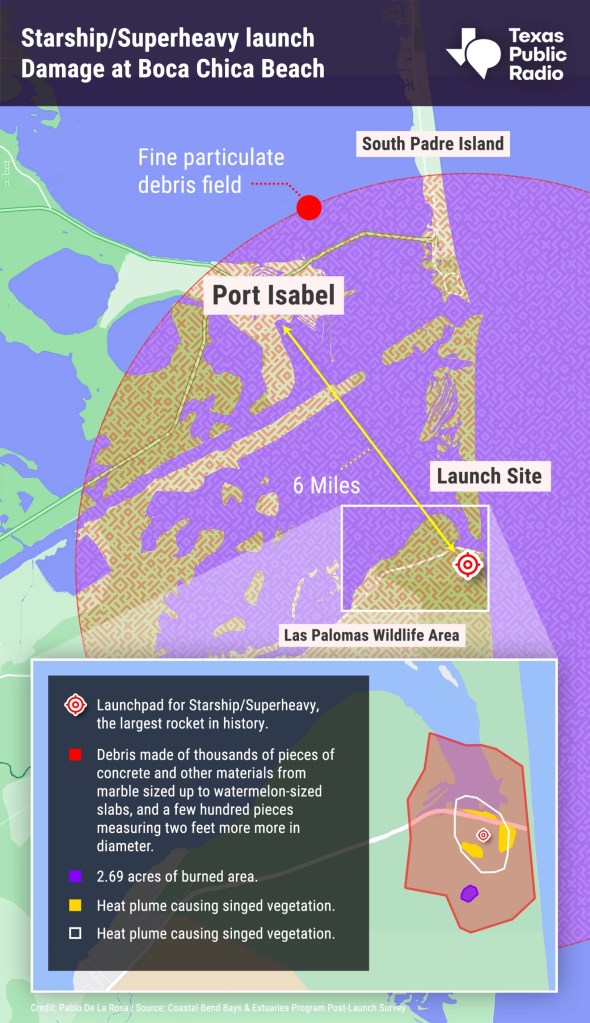
The U.S. Fish and Wildlife Service (USFWS) documented that the debris cloud deposited material as far as six-and-a-half miles north of the launch pad. The agency said in a statement that the debris cloud was made of pulverized concrete.
The launch pad’s destruction could be seen in the mudflats and dunes south of it and in the algal flats to the north. Broken concrete — some pieces the size of golf balls, others the size of car engine blocks or larger — was spread out over nearly three-quarters of a mile in some directions.
Craters from large pieces of concrete were as large as six feet across and a few feet deep. Some pieces hit the ground so hard they were submerged in the sand, leaving only an empty crater with rebar jutting from it.
SpaceX’s video of the launch confirmed the extent of the debris spread, showing some concrete launching into the Gulf of Mexico.
Vegetation within a few hundred yards of the launch pad was singed. A little more than a quarter mile south of the launch pad, a fire burned about three acres, charring a quail’s nest.
Salt-like particulate matter could be seen all over the mudflat south of the launch pad.
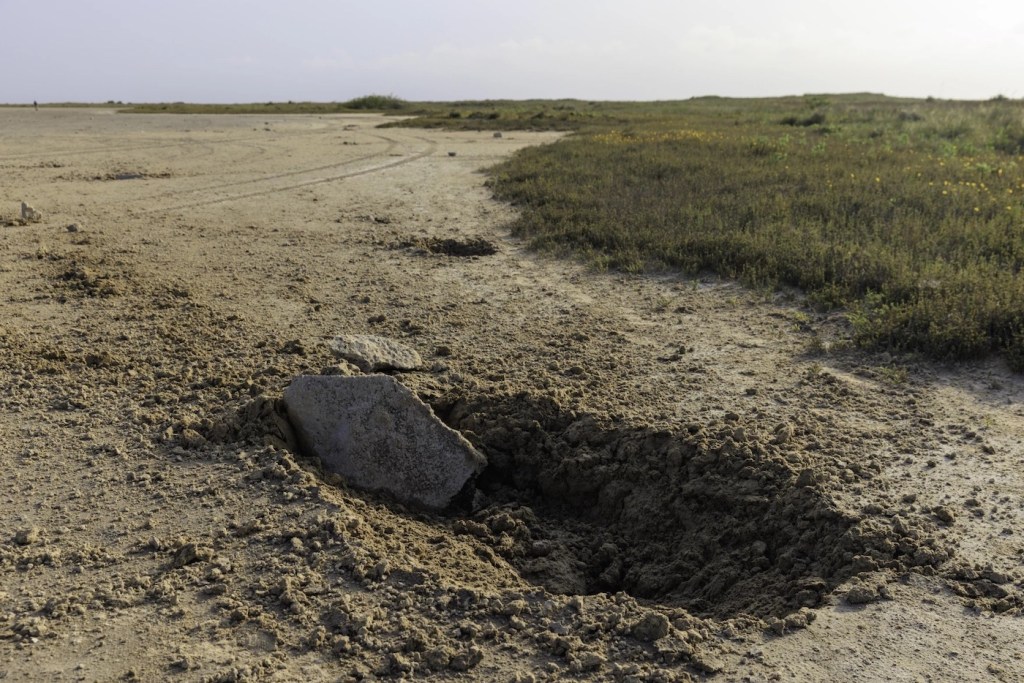
On the algal mudflats north of the launch pad, concrete, metal, the salt-like particulate and rebar could be found more than half a mile away. In total, according to USFWS, around 385 acres of land was affected by debris.
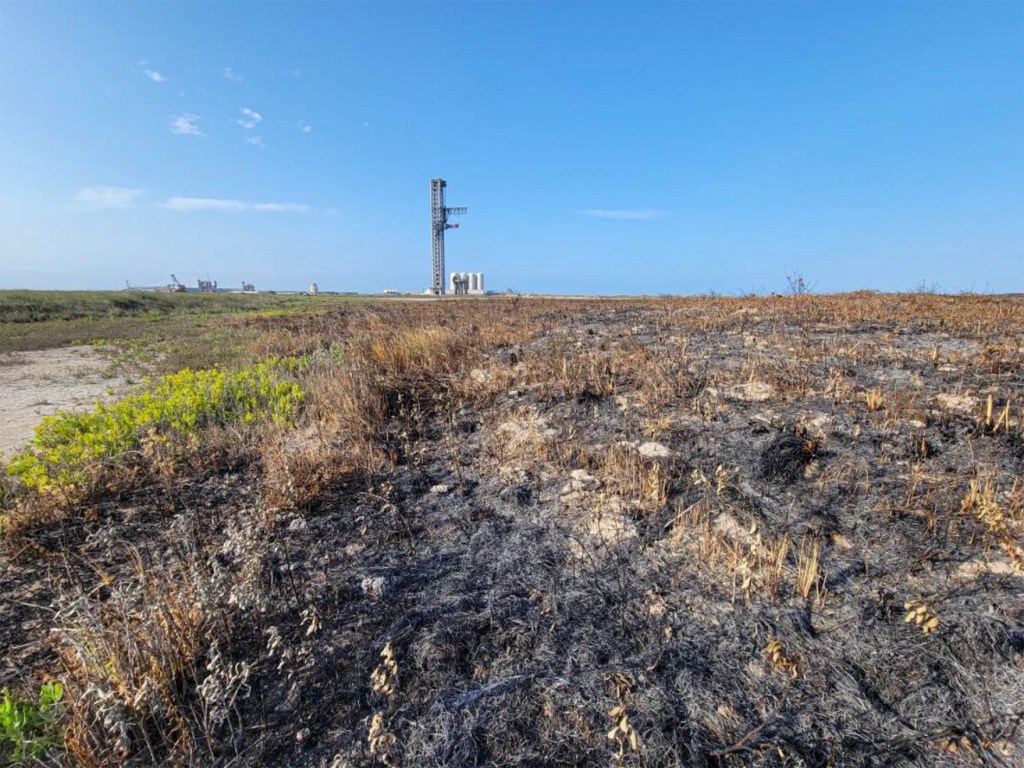
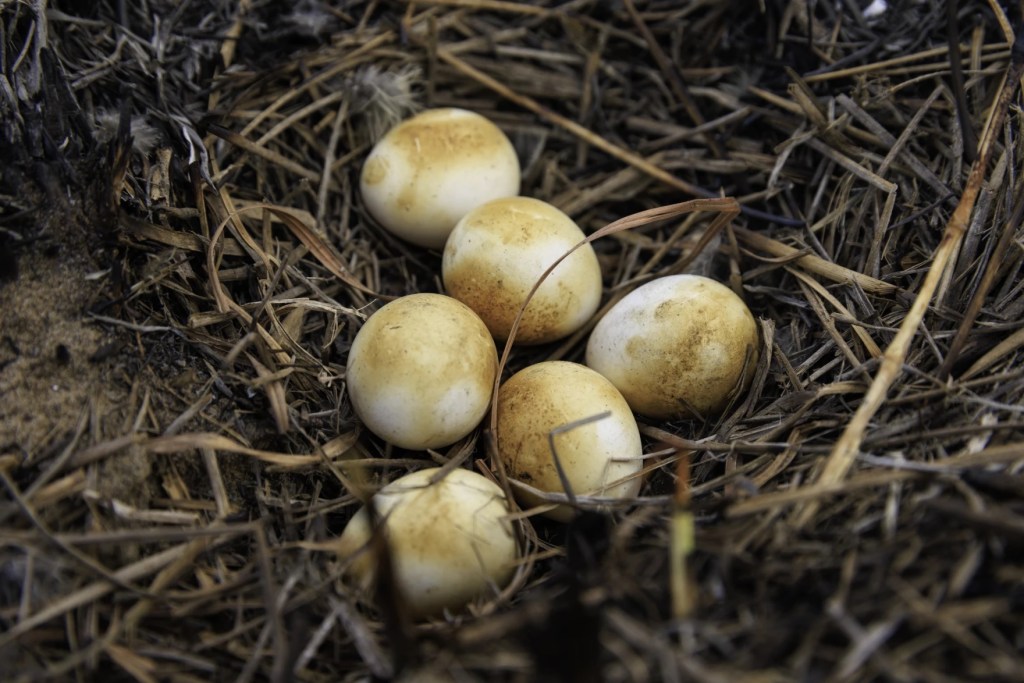
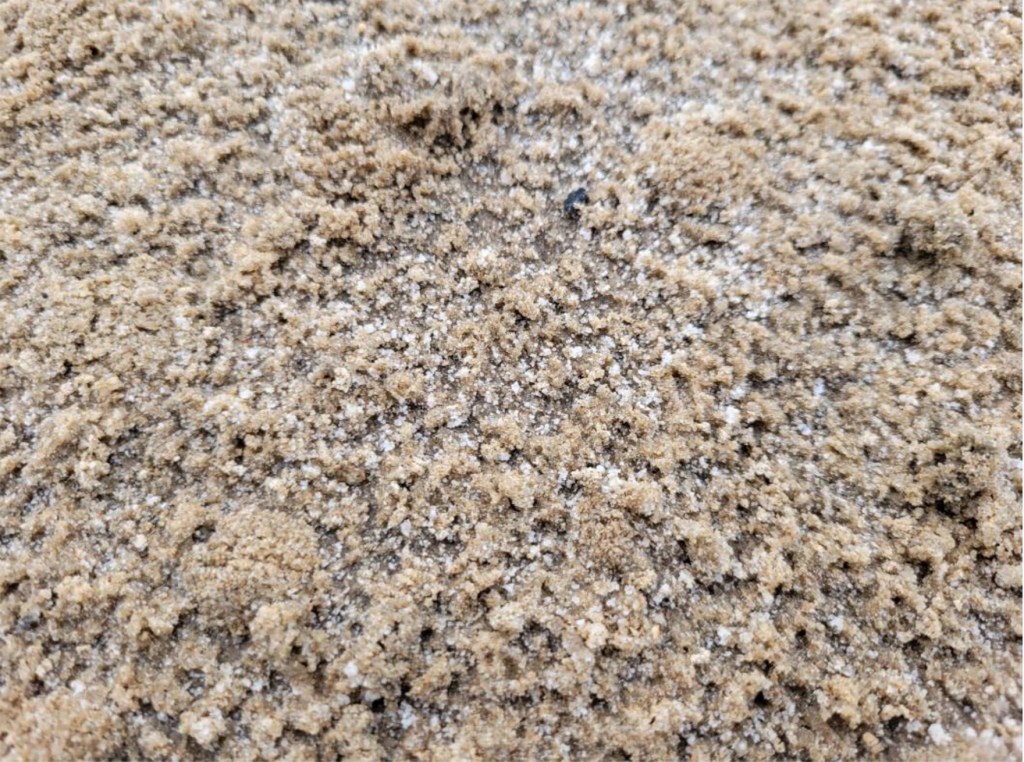
“You get in there and it looks like a literal bomb went off,” said Justin LeClaire, a conservation biologist with the Coastal Bend Bays and Estuaries Program.
LeClaire studies the shorebirds that live in and migrate to Boca Chica, including federally protected plover species, and was one of the first to survey the area after the launch.
He documented that debris landed just a few feet away from a Snowy Plover pair nest scrape. LeClaire also found several federally protected Piping Plovers foraging around debris on the algal flats north of the launch pad.
If SpaceX starts launching routinely — as it plans to — wildlife may leave the area around the launch site.
“If these major disturbances, in addition to actual damage to the habitat, happen consistently every month, every week, birds and other other wildlife are not likely to use that habitat,” LeClaire said.
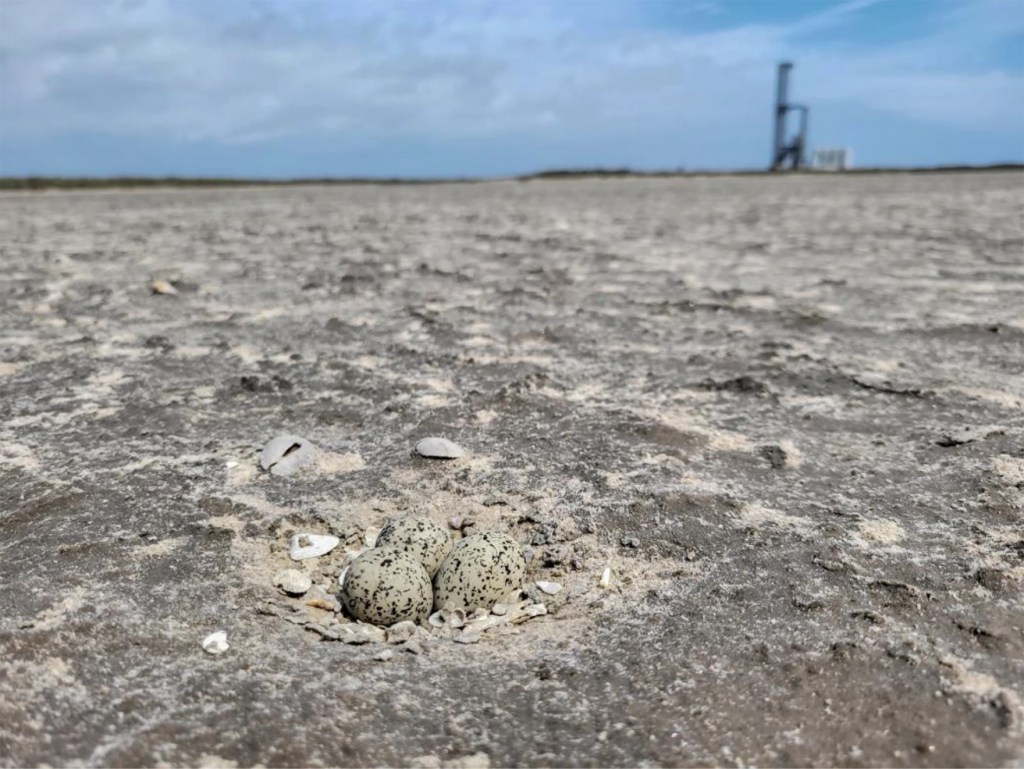
SpaceX CEO Elon Musk tweeted that the company believed the launch pad would survive Starship’s thrust, based on data from February’s static fire test of the SuperHeavy booster. The test only used 50% of the booster’s thrust power. In the same tweet, Musk said SpaceX was developing a water-cooled steel plate to go under the launch pad but it wasn’t ready in time.
But proven launch infrastructure like flame trenches and water deluge systems, both of which could have prevented the debris and damage at Boca Chica, seem to not be an option for Starship.
Musk tweeted in October 2020 that he aspired to not have a flame trench in Boca Chica.
“But this could turn out to be a mistake,” he said.
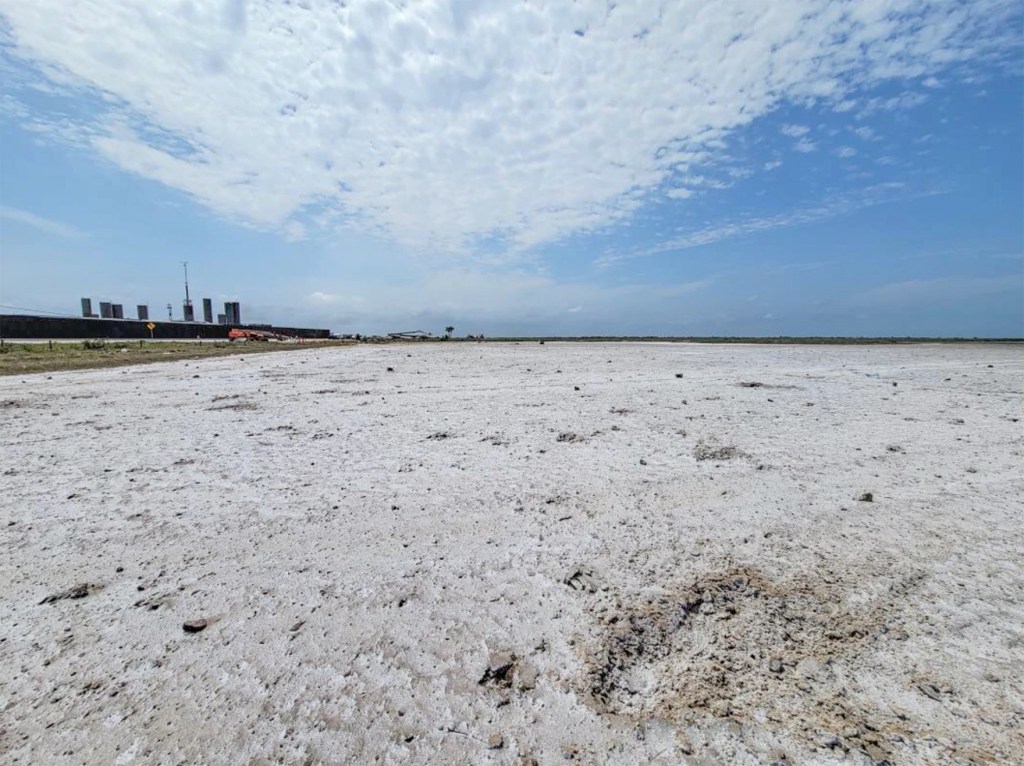
Eric Roesch, an environmental compliance specialist and author of the blog ESG Hound, said this forgoing of more extensive launch infrastructure may have been intentional.
“It sure seemed like the decision to not do these very basic channels or flame protection or systems that you see everywhere else was a matter of convenience,” Roesch said.
SpaceX initially had plans to extend its launch pad facility another 17 acres into the wetlands surrounding Boca Chica Beach. But after the company gave conflicting and insufficient information, the Army Corps of Engineers pulled its permit application for the project.
Because SpaceX is surrounded by state and federally protected lands, Roesch said building launch infrastructure unique to SpaceX’s needs is a massive civil engineering project: it would take years to receive permits for and to construct something he believes SpaceX wasn’t willing to wait for.
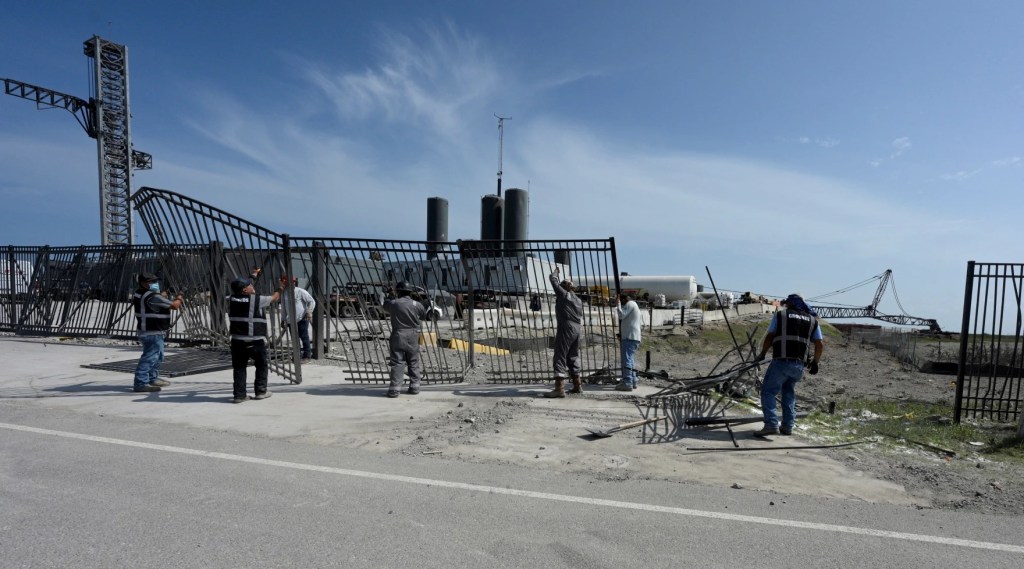
On the launch pad’s destruction itself, Roesch points to the environmental assessment SpaceX completed for the Federal Aviation Administration (FAA), which used 2019 data that underestimated how loud the launch would be; and the Starship SN11 test for how far the debris would spread. What the company called a successful launch actually spread as much debris it had predicted for a full-on explosion on the launch pad.
“I think that probably illustrates better than anything else how woefully and fundamentally inadequate the entire environmental review process is,” Roesch said.
The FAA has grounded the Starship program until its mishap response plan is completed. It requires SpaceX to work with state and federal agencies to remove the debris and survey the damage.
In a statement, the agency said it will make sure SpaceX complies with environmental regulations.
For more pictures of the SpaceX launch debris, visit TPR’s website.
Gaige Davila is a reporter with Texas Public Radio in Port Isabel, Texas.
IRA FLATOW: This is Science Friday. I’m Ira Flatow.
And now it’s time to check in on The State of Science–
RADIO ANNOUNCER: This is KERA.
RADIO ANNOUNCER: For WWNO–
RADIO ANNOUNCER: St. Louis Public Radio News.
RADIO ANNOUNCER: Iowa Public Radio News.
IRA FLATOW: –local science stories of national significance.
Last month, crowds gathered in Southeast Texas to watch SpaceX launch a new rocket from its Boca Chica launchpad on the coast of the Gulf of Mexico. It was a test flight of the largest and most powerful rocket ever built– about 400 feet tall. And it was to be its first orbital launch attempt. But as often happens in the rocket business, things did not go as planned.
The uncrewed rocket exploded shortly after launch– a very common occurrence in the history of rocket science. The environmental impact of rocket explosions, though, has not always been front and center, but this one has been reported by my next guest.
Gaige Davila, reporter for Texas Public Radio, based in Port Isabel, Texas, welcome to Science Friday.
GAIGE DAVILA: Thank you so much. I appreciate it.
IRA FLATOW: Now, you live near where the rocket exploded, right? Did the explosion impact the area? What does it look like right now?
GAIGE DAVILA: Well, here in Port Isabel, immediately after the launch, there was a plume cloud that made its way to the city and a little north of it that clouded the area in dust that was made of sand, soil, and pulverized concrete. But we’ve had some storms here in the last couple of weeks, so most of it has washed away. I’ve kept some of it and I’m looking to get it tested.
And in terms of Boca Chica Beach, there was concrete all over the launchpad, spread about a mile around in all directions. And some of that concrete and pieces of the launch tower, which were metal of course, were found in sensitive algal mudflats, where shorebirds feed. And those flats can take up to a decade to heal.
IRA FLATOW: That’s what I wanted to ask you next. Tell us about this protected ecosystem there.
GAIGE DAVILA: So SpaceX’s facility is essentially surrounded by mudflats of varying degrees of sensitivity. Some of them are just mud. Some of them are just sand. But others have a thin layer of algae and biofilm on top of them. And they are extremely sensitive, to the degree that, in previous launches that SpaceX has had, whenever debris had landed on these layers of algae, the marks are still there all these years later because it takes so long for them to heal.
And shorebirds eat off of these pieces of biofilm, along with crabs and other vertebrates of that nature. And of course, it’s a area where migratory shorebirds come in and rest as they make their way towards Mexico and Central America.
IRA FLATOW: Are there any environmental regulations that SpaceX or anybody would have to follow?
GAIGE DAVILA: The FAA, which is the Federal Aviation Administration, requires SpaceX to do 75 mitigating actions to lessen the impacts of Starship’s launches. Some of these include protecting water sources, watching noise and lighting levels, beach cleanups quarterly, no beach closures on a holiday, et cetera. And they’re required to do these as part of SpaceX’s launch license.
IRA FLATOW: Did it fail to follow these regulations?
GAIGE DAVILA: Well, I think SpaceX underestimated how this launch would turn out in terms of the launchpad being destroyed and how much damage there was. So I don’t know if it’s really a question of them following the mitigations, but more on how SpaceX had the chance to build better launch infrastructure that could have prevented the damage but chose not to.
I spoke to an environmental compliance specialist named Eric Roesch, who also questioned SpaceX’s operation.
ERIC ROESCH: It sure seemed like the decision to not do these very basic channels or flame protection or systems that you see everywhere else was a matter of convenience.
IRA FLATOW: Hmm. What is SpaceX’s reaction to all of this?
GAIGE DAVILA: So recently, Elon Musk said that the launch didn’t cause any “meaningful damage” to the area. Maybe it’s not meaningful to him, but it does matter to the people who live here and those who study the environment here. It’s also just not true. Each launch compounds the damage inflicted from the last.
Justin LeClaire, who is a conservation biologist with the Coastal Bend Bays and Estuaries Program, explained it this way.
JUSTIN LECLAIRE: If these major disturbances, in addition to actual damage to the habitat, just happen consistently every month, every week, birds and other wildlife are not likely to use that habitat.
IRA FLATOW: Earlier this week, environmental groups sued the FAA over SpaceX’s launch license. What are the details there? What’s going on?
GAIGE DAVILA: So the groups involved in the lawsuit are essentially saying that the FAA has let SpaceX environmentally regulate itself. And this is because the FAA had initially planned a more thorough environmental analysis that would have taken years to complete, but instead deferred to SpaceX on what process it wanted to go through.
SpaceX, of course, chose the process that took the least amount of time. So the claim is that the FAA, through political pressure from SpaceX, moved along the process without a true look at the environmental impact the launches would have had on the area.
IRA FLATOW: Well, could we see a large– or a long– delay then in any next test flight?
GAIGE DAVILA: Possibly. Because the FAA has launched an investigation into the launch, which could take a few months to complete. But locally, I don’t think so. Because local leadership has been noticeably quiet. They have taken a step back from their usual voicing of support for SpaceX in the last couple of months. And with this launch going the way that it has, I don’t think it’s a coincidence that we haven’t seen them respond to it.
IRA FLATOW: And of course, the federal government can always overrule any kind of FAA decision as part of national security. Because they need SpaceX to get to the moon.
GAIGE DAVILA: Right. That’s a big question in this– is the fact that they are expecting SpaceX to do something within I believe it’s 2025 in order to get closer to those human-oriented moon missions. But the way that it’s going now, they seem to be just going through roadblock after roadblock because of the missteps that they take.
IRA FLATOW: Well, Gaige, thank you for reporting for us.
GAIGE DAVILA: Thank you so much. I appreciate it.
IRA FLATOW: Gaige Davila, reporter for Texas Public Radio, based in Port Isabel, Texas.
Copyright © 2023 Science Friday Initiative. All rights reserved. Science Friday transcripts are produced on a tight deadline by 3Play Media. Fidelity to the original aired/published audio or video file might vary, and text might be updated or amended in the future. For the authoritative record of Science Friday’s programming, please visit the original aired/published recording. For terms of use and more information, visit our policies pages at http://www.sciencefriday.com/about/policies/
Kathleen Davis is a producer and fill-in host at Science Friday, which means she spends her weeks researching, writing, editing, and sometimes talking into a microphone. She’s always eager to talk about freshwater lakes and Coney Island diners.
Ira Flatow is the founder and host of Science Friday. His green thumb has revived many an office plant at death’s door.